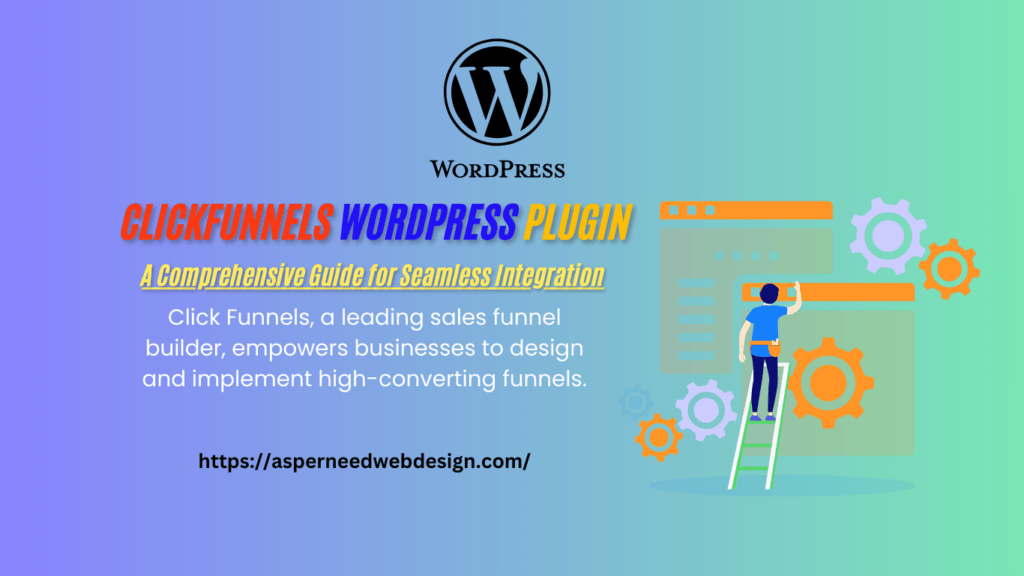In the dynamic world of digital marketing, creating optimized sales funnels is a key strategy for converting website visitors into paying customers. ClickFunnels, a leading sales funnel builder, empowers businesses to design and implement high-converting funnels. If you’re a WordPress user, integrating the ClickFunnels WordPress plugin can streamline your marketing efforts, bringing the best of both platforms together. In this guide, we’ll explore everything you need to know about the plugin, including its features, benefits, installation process, and tips for maximizing its potential.
What Is the ClickFunnels WordPress Plugin?
The ClickFunnels WordPress plugin is a powerful tool that connects your WordPress website to your ClickFunnels account. This integration allows you to:
- Publish ClickFunnels pages directly on your WordPress site.
- Seamlessly manage funnel pages without needing advanced technical skills.
- Enhance user experience by aligning your sales funnels with your WordPress site’s design.
This plugin simplifies the process of linking ClickFunnels with your WordPress site, ensuring a cohesive branding and navigation experience for your audience.
Key Features of the ClickFunnels WordPress Plugin
- Easy Integration
The plugin bridges the gap between WordPress and ClickFunnels without requiring complex coding or third-party tools. - Page Mapping
You can map your ClickFunnels pages to existing WordPress pages, maintaining URL consistency for SEO and user navigation. - Shortcode Support
Use shortcodes to embed ClickFunnels pages within your WordPress content for added flexibility. - Custom Domain Support
The plugin enables you to host your ClickFunnels pages under your WordPress domain, reinforcing brand identity. - SEO-Friendly URLs
Improve your website’s SEO performance by using clean, descriptive URLs for your funnel pages.
Benefits of Using the ClickFunnels WordPress Plugin
1. Streamlined Marketing Efforts
By integrating your WordPress website with ClickFunnels, you can manage your sales funnels without juggling multiple platforms.
2. Improved SEO Performance
Hosting your funnel pages on your WordPress domain ensures they benefit from the domain’s authority, boosting organic traffic.
3. Enhanced User Experience
Keep your website and sales funnels visually aligned, providing a consistent experience for visitors.
4. Cost-Effectiveness
Eliminate the need for hiring developers to create custom integrations or manage separate domains for ClickFunnels pages.
5. Time-Saving
Quickly publish and update funnel pages without leaving your WordPress dashboard.
How to Install and Configure the ClickFunnels WordPress Plugin
Follow these steps to get started:
Step 1: Download the Plugin
- Log in to your WordPress dashboard.
- Navigate to Plugins > Add New.
- Search for “ClickFunnels” and click Install Now.
Step 2: Activate the Plugin
Once installed, click Activate to enable the plugin on your site.
Step 3: Connect Your ClickFunnels Account
- Navigate through your WordPress dashboard to Settings > ClickFunnels.
- Enter your ClickFunnels API key (found in your ClickFunnels account settings).
- Save your settings to establish the connection.
Step 4: Map Your Funnel Pages
- Under the plugin settings, click Add New Page Mapping.
- Select the ClickFunnels page you want to map.
- Assign it to an existing WordPress page or create a new one.
Step 5: Test and Publish
Preview your mapped pages to ensure they display correctly, then publish them live on your site.
Best Practices for Using the ClickFunnels WordPress Plugin
- Optimize Funnel Pages for SEO
Use WordPress SEO plugins like Yoast or Rank Math to optimize meta titles, descriptions, and keywords for your funnel pages. - Monitor Performance
Use analytics tools like Google Analytics to track the performance of your ClickFunnels pages integrated with WordPress. - Keep Plugins Updated
To guarantee compatibility with the most recent version of WordPress, update the ClickFunnels plugin on a regular basis. - Test Responsiveness
Because a large percentage of traffic originates from mobile devices, make sure your funnel pages are responsive. - Leverage A/B Testing
Use ClickFunnels’ A/B testing features to experiment with different designs and content, optimizing for conversions.
Common Issues and Troubleshooting Tips
1. Pages Not Displaying Properly
- Check your page mapping settings.
- Verify that the plugin is compatible with the WordPress theme you are using.
2. API Key Errors
- Double-check your API key in the plugin settings.
- Regenerate your API key in ClickFunnels if needed.
3. Slow Loading Times
- Optimize images and scripts on your funnel pages.
- Use caching plugins for WordPress to improve overall site speed.
Conclusion
The ClickFunnels WordPress plugin is an invaluable tool for marketers and entrepreneurs looking to leverage the combined power of WordPress and ClickFunnels. Its seamless integration, user-friendly features, and ability to enhance both SEO and user experience make it a must-have for anyone serious about driving conversions.
By following the steps and best practices outlined in this guide, you can unlock the full potential of the ClickFunnels WordPress plugin and take your digital marketing efforts to the next level.
Ready to supercharge your sales funnels? Install the ClickFunnels WordPress plugin today and start converting like a pro!



